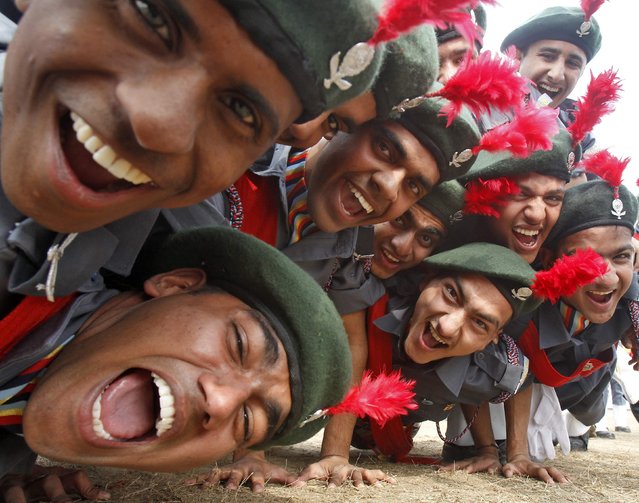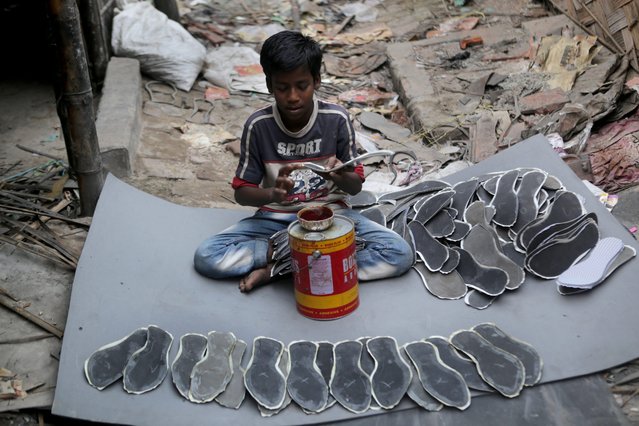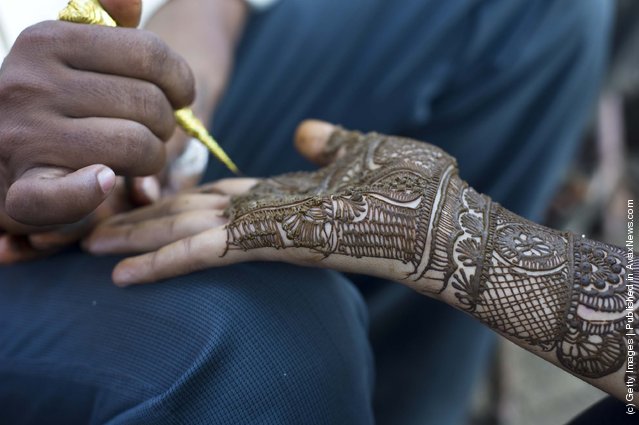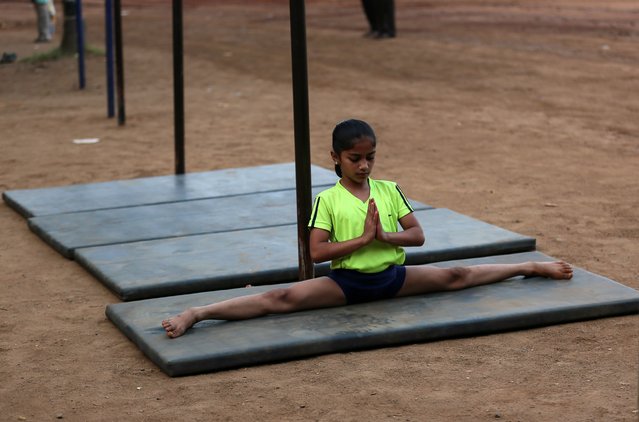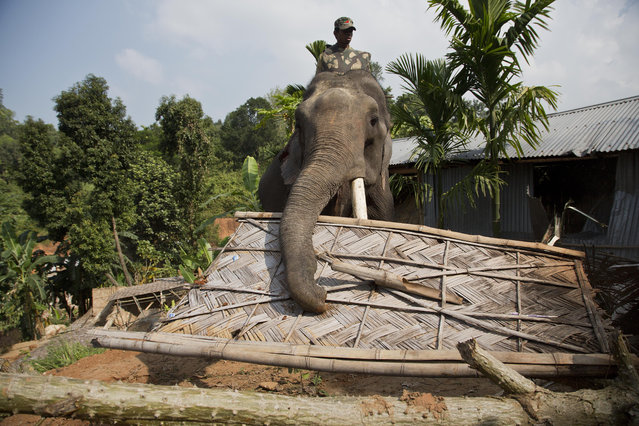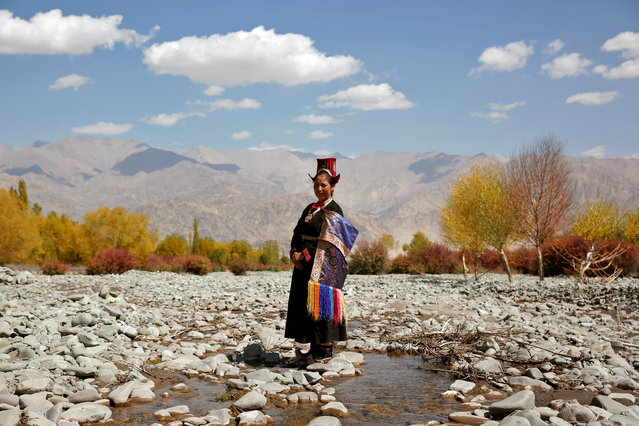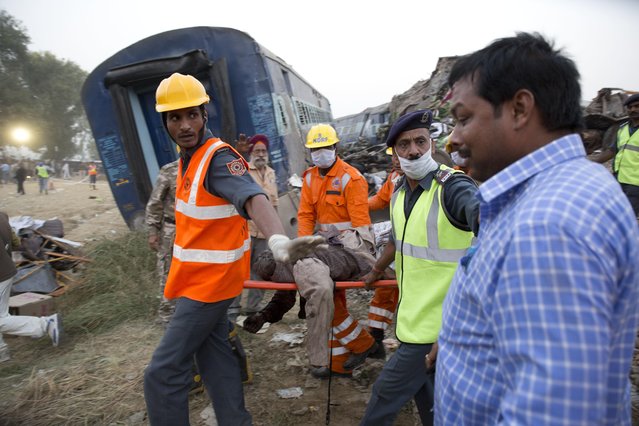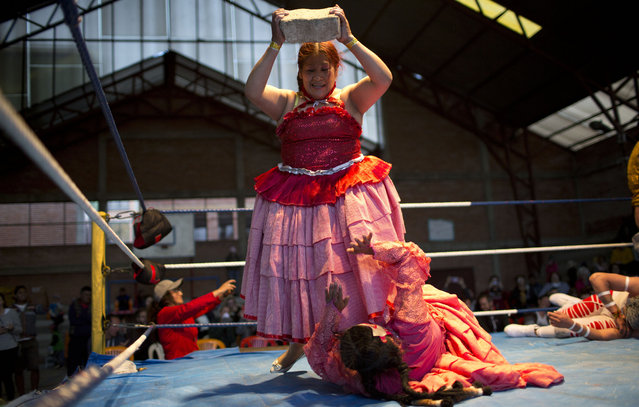
Veteran cholita wrestler Jennifer dos Caras, 45, holds a cement block over teen wrestler Lucero la Bonita in the ring in El Alto, Bolivia, Monday, January 21, 2019. Trainees of cholita wrestling are still a year away from their full professional debuts while competing in matches against established athletes. (Photo by Juan Karita/AP Photo)
28 Feb 2019 00:05:00,post received
0 comments

